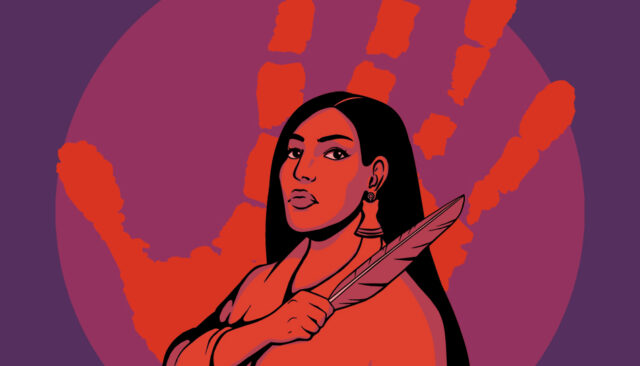Missing and Murdered Indigenous Women’s Day
May 1, 2024
| Return to REACH Hub
Ver la página en Español: El día de las mujeres indígenas desaparecidas y asesinadas
Every year on May 5, communities across the globe come together to observe Missing and Murdered Indigenous Women’s (MMIW) Day. Created in response to the murder of Hanna Harris on the Northern Cheyenne Reservation and other abductions and killings of Indigenous women across the United States, it is a day to honor the lives of those who have been lost, to remember their stories, and to advocate for justice on their behalf.
The statistics surrounding missing and murdered Indigenous women and girls are staggering, with rates of violence far exceeding those of non-Indigenous populations. More than four in five American Indian and Alaska Native adults (83%) have experienced some form of violence in their lifetime. Systemic factors such as colonization, forced assimilation, and historical trauma all contribute to the vulnerability of Indigenous women and girls.
Violence against women and domestic violence are not traditional within Indigenous communities and cultures. Of the estimated 1.5 million Indigenous women who had experienced violence, 97% of the violence was committed by a non-Indigenous perpetrator. The colonization of Indigenous lands brought with it systemic oppression and a breakdown of Indigenous societal structures and values. The imposition of patriarchal structures devalued the status of Indigenous women, making them more vulnerable to abuse. Assimilation policies such as boarding schools further exacerbated these issues. Indigenous children, removed from their families and communities, were not only stripped of their cultural identities but also exposed to rampant physical and sexual abuse. The intergenerational impact of this cycle of trauma continues to affect families and communities today.
Historically, Indigenous people have been marginalized by legal systems that do not recognize or inadequately enforce their rights. But that is improving, thanks to the tireless work of advocates and activists. In 2013, the Violence Against Women Act was updated to allow Tribal courts to prosecute non-Indigenous offenders. Another important piece of legislation is the Tribal Law and Order Act of 2010. This act strengthens Tribal courts by allowing them to issue harsher penalties for crimes, including domestic violence. The goal is to deter perpetrators with the threat of significant legal consequences.
A vital resource for immediate protection in Indigenous communities is Tribal protection orders. These orders work like restraining orders but are issued by Tribal courts. They prevent perpetrators from contacting or approaching the survivor. One of the strengths of the Tribal protection order is that they are recognized across Tribal and non-Tribal lands, ensuring that survivors are protected no matter where they are. To learn more about Tribal protection orders and how to apply for one, visit WomensLaw.org
Missing and Murdered Indigenous Women’s Day is a time for remembrance, reflection, and action. It is a day to honor the past, stand in solidarity with the present, and work towards a better future for Indigenous communities. If you are an Indigenous survivor of domestic or sexual violence you can access culturally-appropriate resources by visiting the National Indigenous Women’s Resource Center or the StrongHearts Native Helpline.
(Image credit: National Indigenous Women’s Resource Center)





